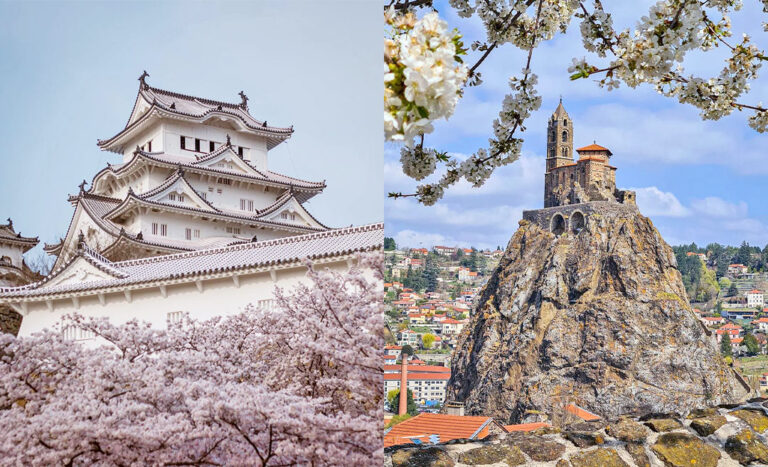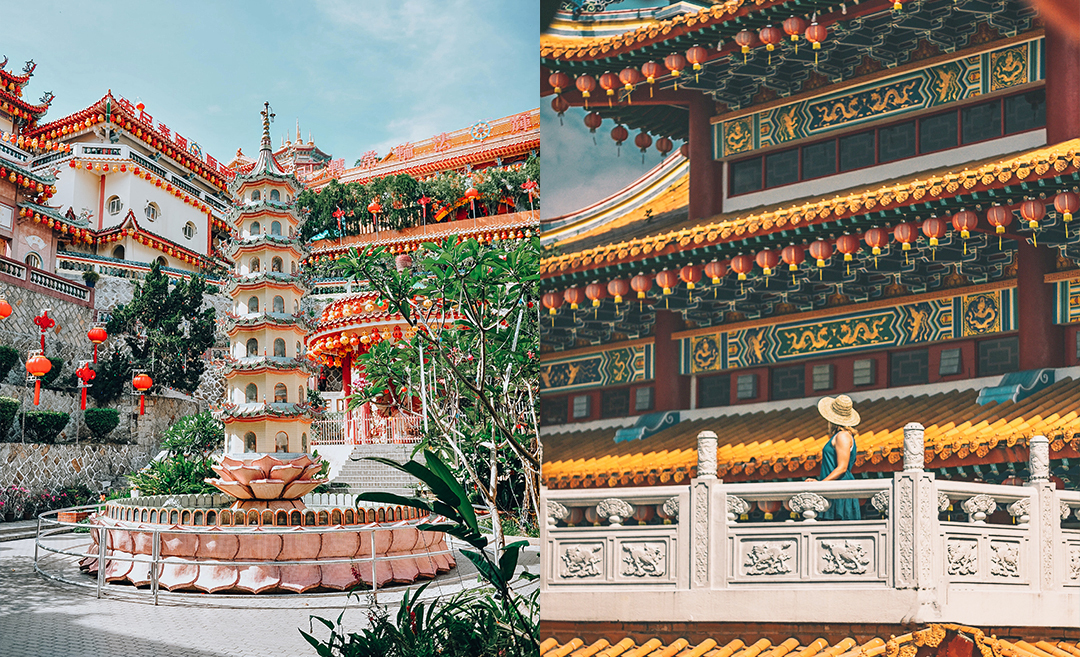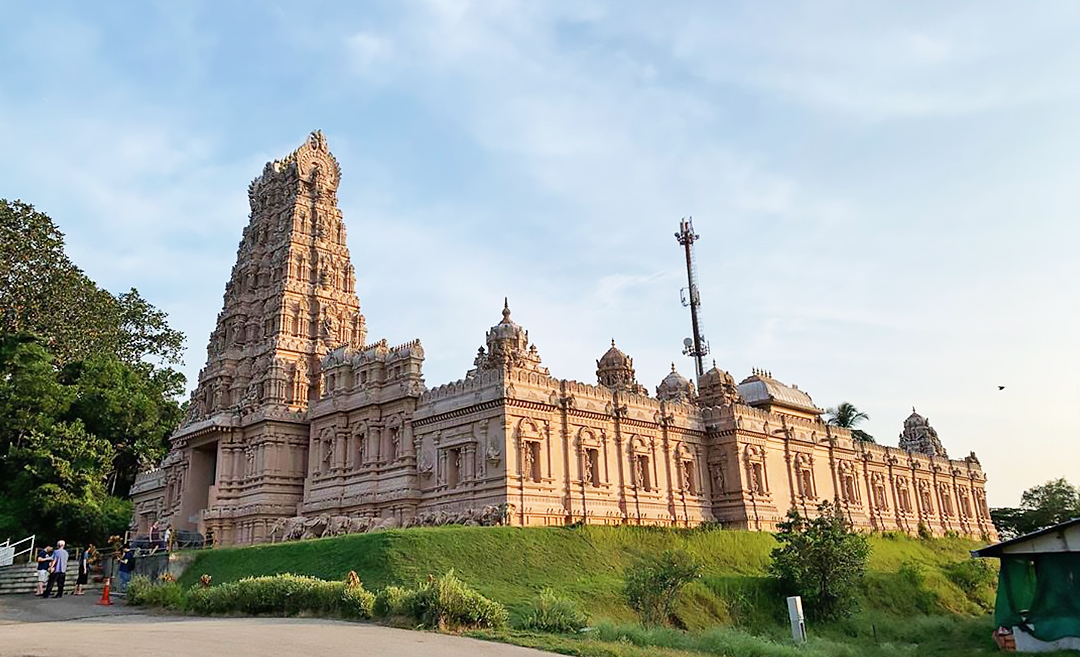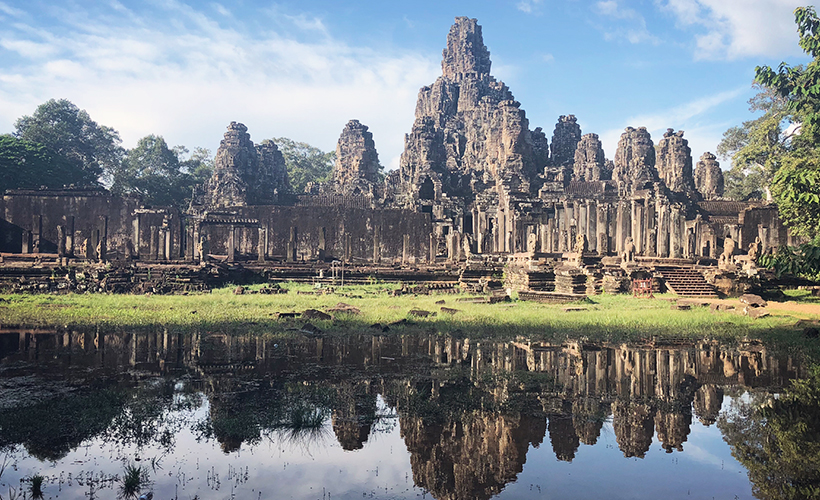Aside from allowing you to explore new cultures and natural wonders, travelling also lets you examine first-hand the great monuments built by civilisations past and present. While the intangible aspects of culture — like cuisine, the performing arts, and festivals — help you enter the mind and spirit of foreign cultures, their grandest monuments will help you understand their loftiest ideals and power structures.
Visiting great historic sites also exposes you to distinct architectural styles, which can stimulate the intellect and fuel creativity. From bejewelled churches in western Europe to temples hidden in the jungles of Southeast Asia, our guide will introduce you to the distinct architectural styles found in grand historic sites.
1. Basilica of San Vitale, Italy
Architectural style: Early Byzantine
Situated in the city of Ravenna in Italy, the Basilica of San Vitale is a remarkable 6th century church. San Vitale was built when the entire region was part of the Byzantine Empire and was ruled by Constantinople (modern Istanbul, Turkiye).
The church is laid out octagonally and is crowned by a dome. While the doorways and stepped towers are reminiscent of late Roman architecture, the flying buttresses, polygonal apse, and intricate brickwork are characteristic of Byzantine architecture.
Aside from its pleasing symmetry, the church is also noteworthy for its well-preserved mosaics of the Byzantine Emperor, Justinian, and his Empress, Theodora. These mosaics can be found at the foot of the apse walls.
Similar historic sites: Basilica of Sant’Apollinare in Classe (Ravenna, Italy), Hagia Sophia (Istanbul, Turkiye)
Address: Via San Vitale, 17, 48121 Ravenna RA, Italy
Contact: +39 0544 541688
2. Le Puy Cathedral, France
Architectural style: Romanesque
Also known as the Cathedral of Our Lady of the Annunciation, Le Puy Cathedral is located in the prefecture of Le Puy-en-Velay in Auvergne, France. Originally a Romanesque cathedral and cloister, the complex has been renovated throughout the centuries.
The original Romanesque architecture can still be discerned in the cathedral’s imposing facade, with its intricate arrangements of diversified arches. Other notable Romanesque features include the nave’s rounded barrel vaults (supported by cross-shaped pillars) and the transept’s elegant double columns.
Similar historic sites: Basilica of Sant’Ambrogio (Milan, Italy), Tower of London (London, United Kingdom)
Address: 2 Rue de la Manécanterie, 43000 Le Puy-en-Velay, France
Contact: +33 4 71 09 79 77
3. Pre Rup, Cambodia
Architectural style: Khmer
Constructed in the mid-10th century for the Khmer king, Rajendravarman II, Pre Rup is an outstanding early example of Khmer architecture. Located south of the East Baray, Pre Rup has a square layout and two perimeter walls. This Hindu temple was constructed largely from laterite and brick, which gives the structure a distinct reddish tone that is accentuated by the early morning and late afternoon sunlight.
As is typical of Khmer temples, Pre Rup boasts galleries, numerous small shrines, and a square-based pyramid crowned with five towers. While visitors can still see bas-relief carvings at the central tower’s eastern door, many of the freestanding statues of Hindu deities have since been removed.
Similar historic sites: Angkor Wat (Siem Reap, Cambodia) and Bakong (Hariharalaya Complex, Cambodia)
Address: CWMC+X6F Angkor Archaeological Park, Krong Siem Reap 17000, Cambodia
4. Himeji Castle, Japan
Architectural style: Japanese castle architecture
Built in the 14th century under the orders of Akamatsu Norimura, a samurai of the Akamatsu clan, Himeji Castle is an outstanding example of Japanese castle architecture. Principally constructed from wood and stone, the curved walls have been poetically described as resembling an unfolded fan.
The main keep (daitenshu) stands at the centre of the complex and is surrounded by three smaller subsidiary keeps. Notable architectural motifs include the feudal family crests that adorn many parts of the castle, as well as the angled chutes or ‘stone drop windows’.
Himeji Castle looks particularly picturesque during cherry blossom season, so plan your trip accordingly.
Similar historic sites: Nagoya Castle (Nagoya, Japan) and Osaka Castle (Osaka, Japan)
Address: 68 Honmachi, Himeji, Hyogo 670-0012, Japan
Contact: +81 79-285-1146
5. The Rock-Hewn Churches of Lalibela, Ethiopia
Architectural style: Aksumite
Located near the town of Lalibela, the 11 monolithic Churches of Lalibela are one of the most famous examples of Aksumite architecture. The churches were said to have been built by Emperor Lalibela of the Zagwe dynasty, though they’re most likely the product of several generations.
Four churches are carved from a single rock, and the remaining seven share a wall with the mountain from which they were carved. Bet Golgotha is known for its bas-relief carvings, while Bet Mariam is known for its paintings of geometrical designs. Overall, the churches are either square or rectangular in form and have basilical or cruciform plans.
The churches remain an active site of pilgrimage for Ethiopian Orthodox Christians.
Similar historic sites: Monastery of Debre Damo (Tigray Region, Ethiopia) and Yemrehana Krestos Church (Amhara Region, Ethiopia)
Address: 22MV+79C, Unnamed Road, Lalibela, Ethiopia
Contact: +251 91 203 5588
6. Kailasa Temple, India
Architectural style: Pallava-Chalukya
Completed in the 8th century, the Kailasa Temple is the largest of the rock-hewn Hindu temples at the Ellora Caves in Maharashtra, India. Carved entirely from the rock cliff face, Kailasa is renowned for its scale, flat-roofed mandapa supported by 16 pillars, and central shrine housing a lingam.
Pallavan and Chalukyan artisans were heavily involved in the temple’s construction, which accounts for its non-Deccan architectural style. Visitors first encounter a gateway that opens to reveal a U-shaped courtyard, while the courtyard is edged by a columned arcade three stories high.
The temple is also known for its numerous sculptures, bas-reliefs of Hindu deities, and scenes from Hindu mythology.
Similar historic sites: Mandagapattu Tirumurti Temple (Tamil Nadu, India) and The Vishvakarma Cave (Ellora Caves, Maharashtra, India)
Address: Ellora, Maharashtra 431102, India
7. Saint Basil’s Cathedral, Russia
Architectural style: Muscovite
Also known as the Cathedral of Vasily the Blessed, Saint Basil’s Cathedral was formerly an Orthodox church, though it is now a museum. Built by the infamous tsar, Ivan the Terrible, the church is famous for its nine domes corresponding to nine individual chapels. The domes are shaped like the flame of a bonfire rising into the sky.
Due to its bright colours and bold geometric patterns, the cathedral has been likened to a fairy tale castle and gingerbread house. Remarkably, Saint Basil’s has no precedent in Muscovite architecture, and historians have disputed the source of its unique architectural style. Some hypothesise an Islamic origin, while others believe the vernacular wooden architecture of the Russian north inspires its style.
Similar historic sites: Cathedral of St. Sophia (Kyiv, Ukraine) and The Cathedral of the Dormition (Moscow, Russia)
Address: Red Square, Moscow, Russia, 109012
Contact: +7 495 698-33-04
8. Fallingwater, USA
Architectural style: Modern and Organic
Designed by Frank Lloyd Wright in 1935, Fallingwater is located in the Laurel Highlands of southwest Pennsylvania. Commissioned by Edgar J and Liliane Kaufmann (of Kaufmann’s Department Store fame), Fallingwater is partially built over an active waterfall.
The home both stands out and fuses with its natural surroundings in accordance with the principles of organic architecture. Japanese architecture strongly influenced Wright, which is evident in the structure’s aesthetics. Fallingwater is also renowned for its cantilevered design and fireplace hearth, which incorporates boulders sourced from its environs.
Similar Historic Sites: Church of the Light (Ibaraki, Osaka Prefecture, Japan), The Sydney Opera House (Sydney, Australia), and The Heydar Aliyev Center (Baku, Azerbaijan)
Address: 1491 Mill Run Rd, Mill Run, PA 15464, United States
Contact: +1 724-329-8501



